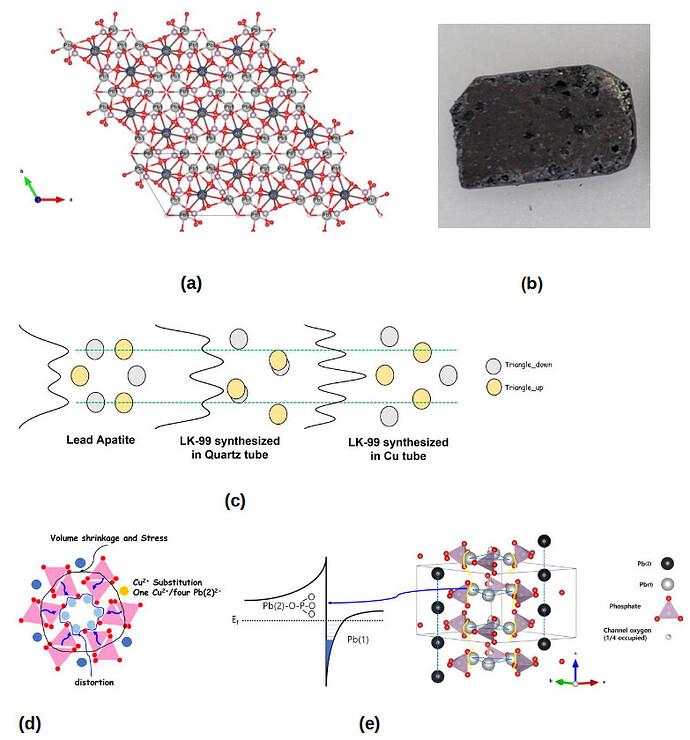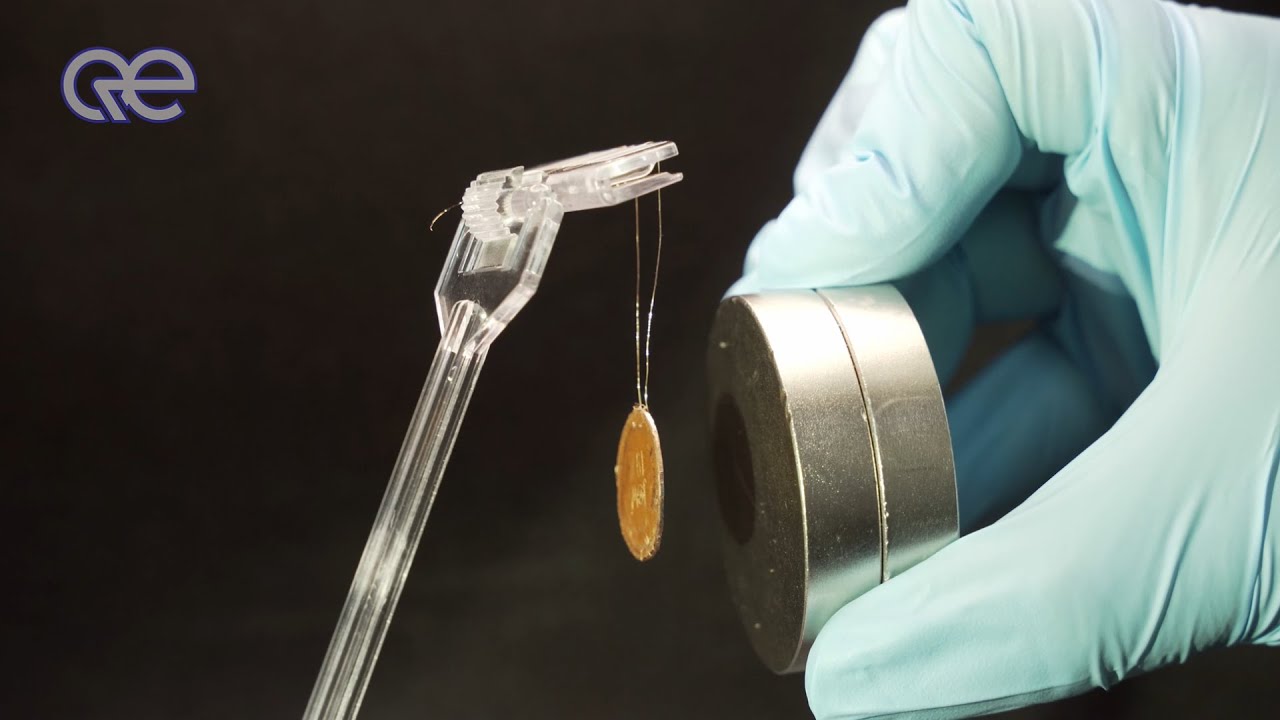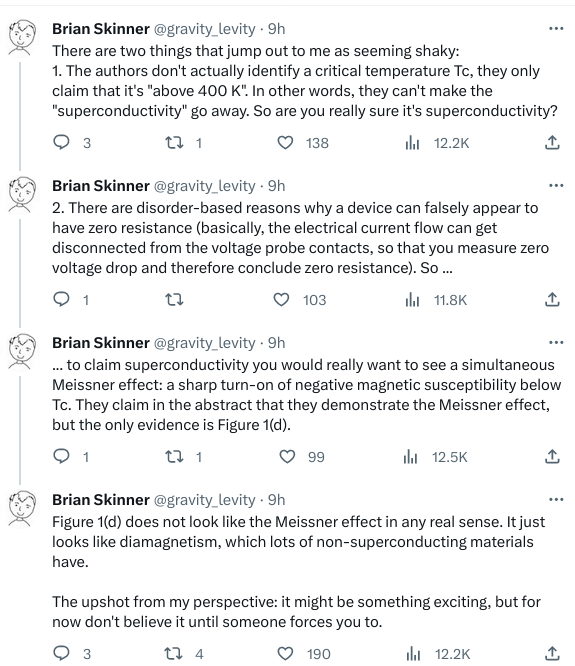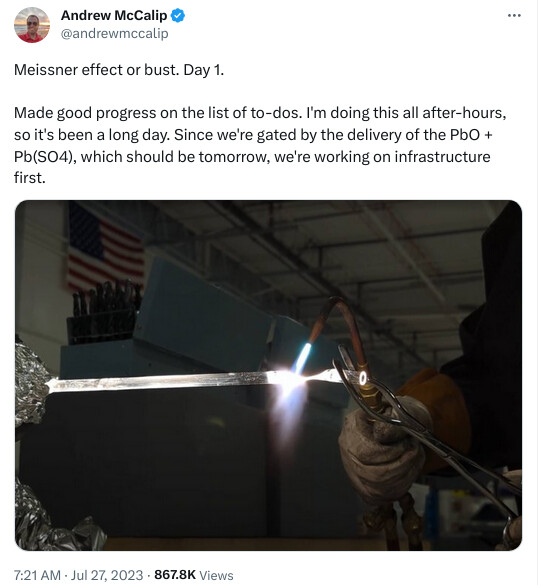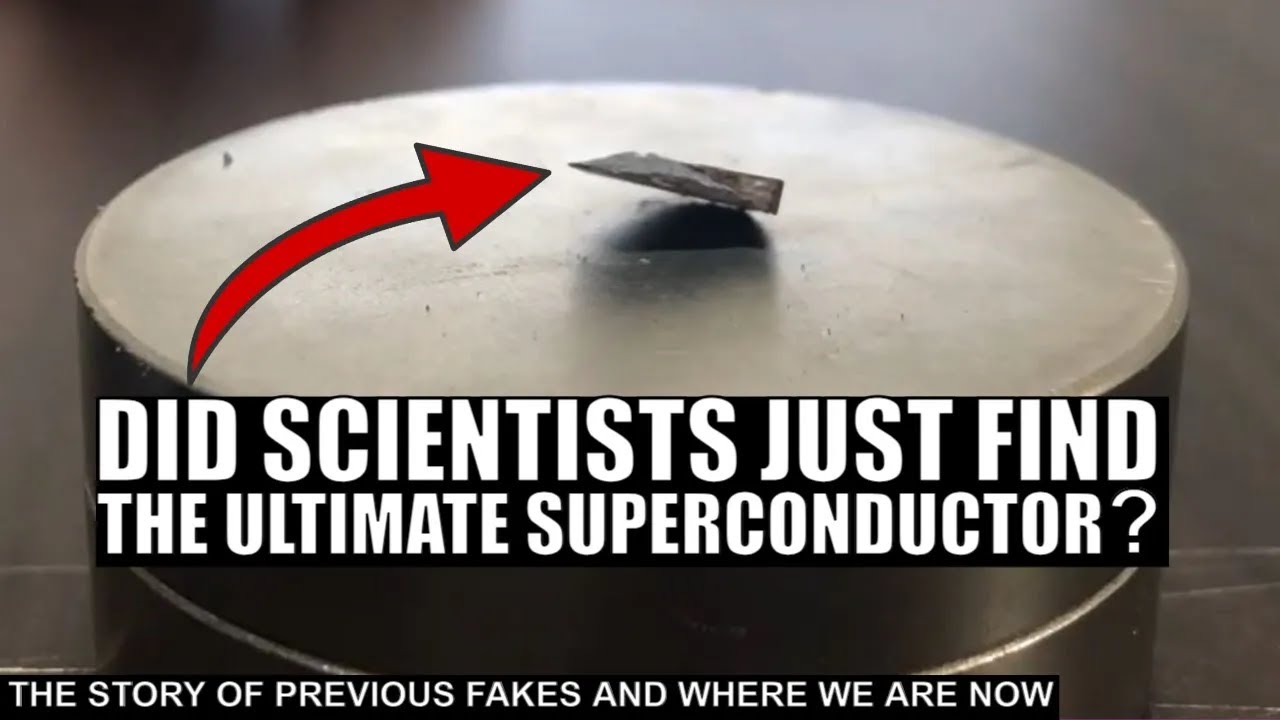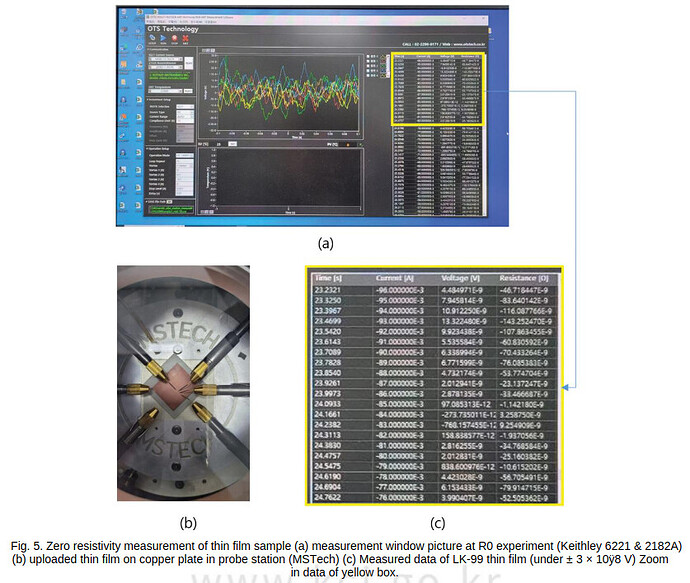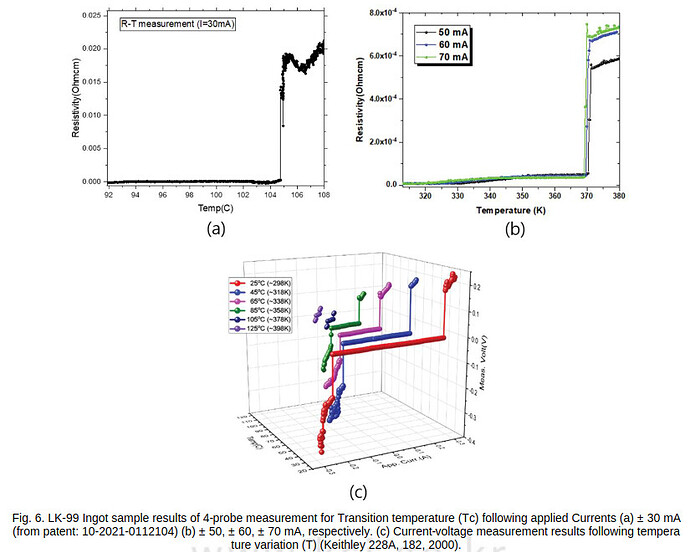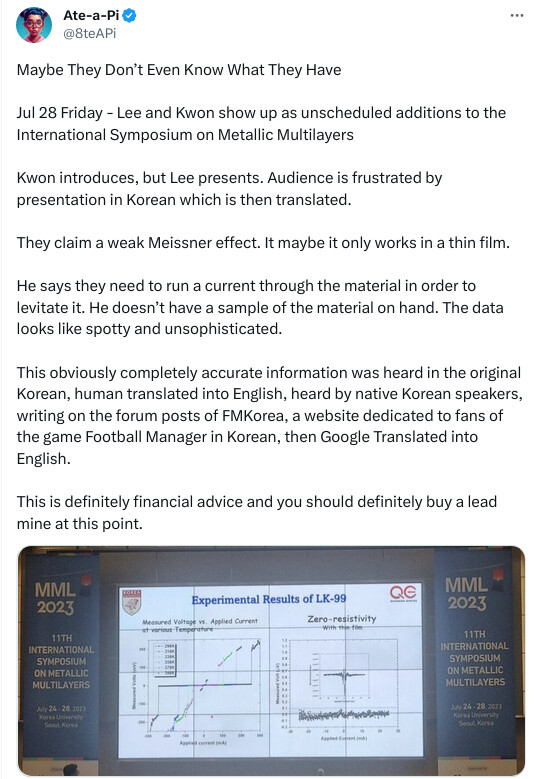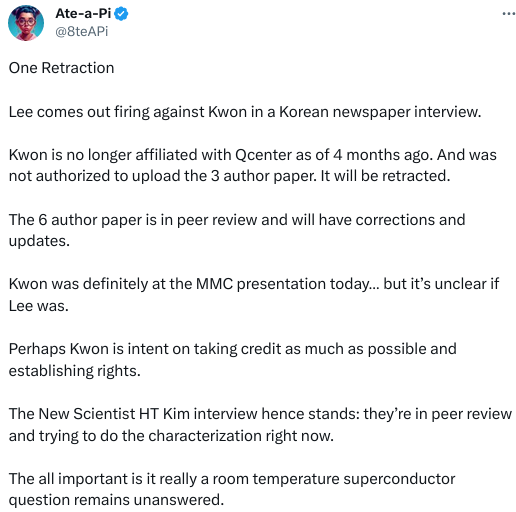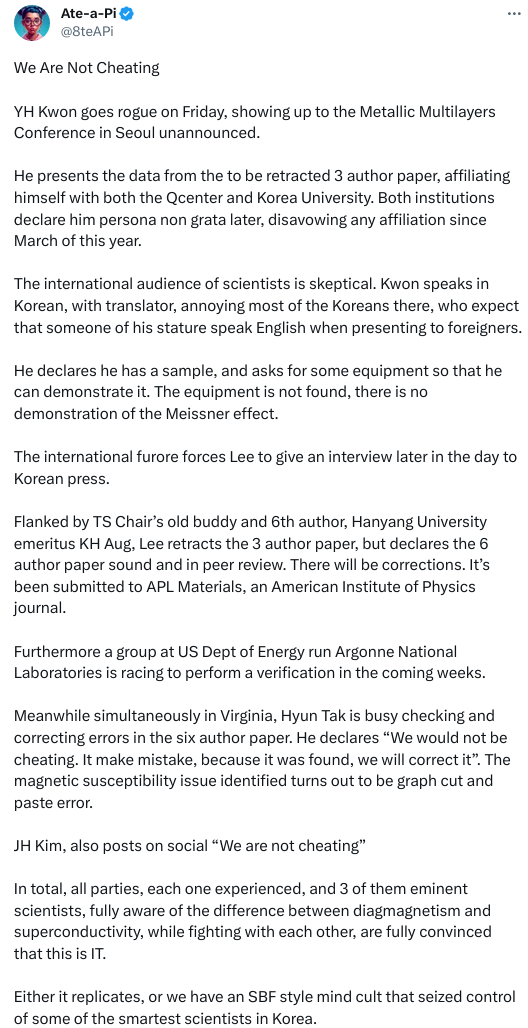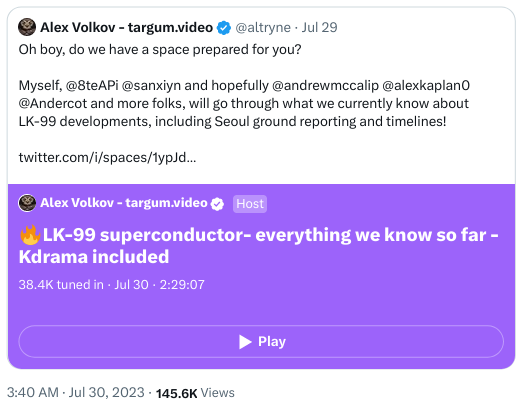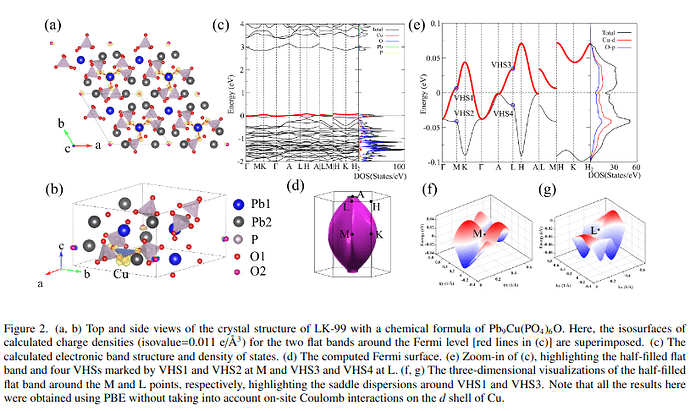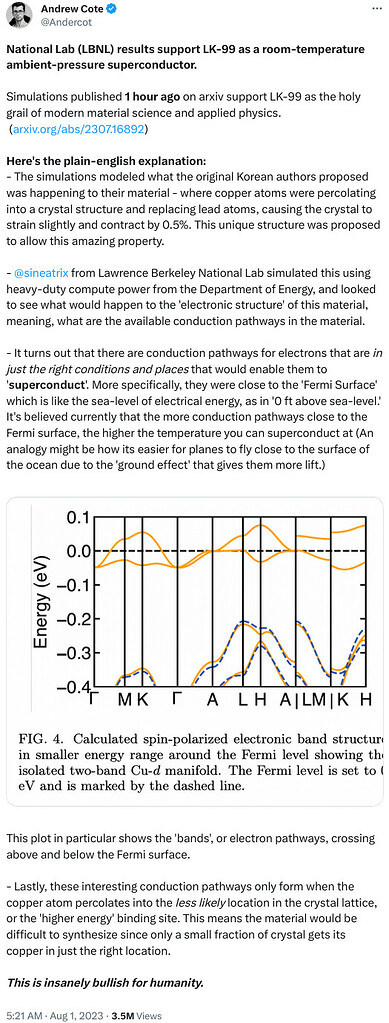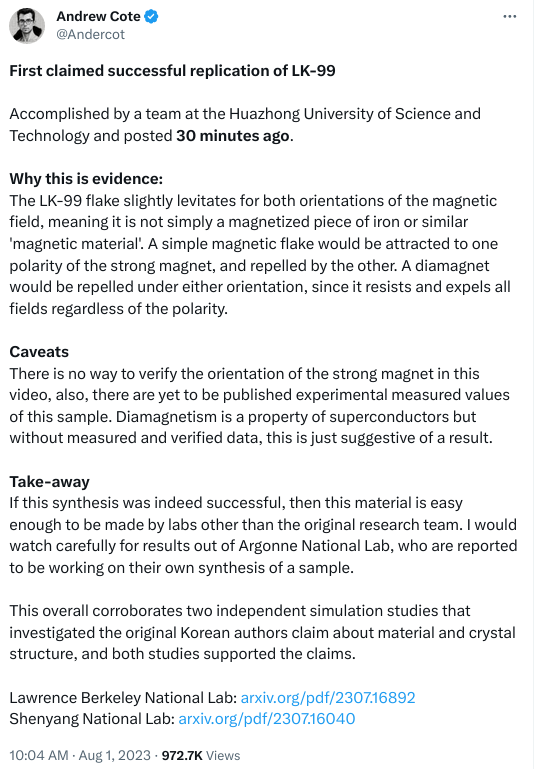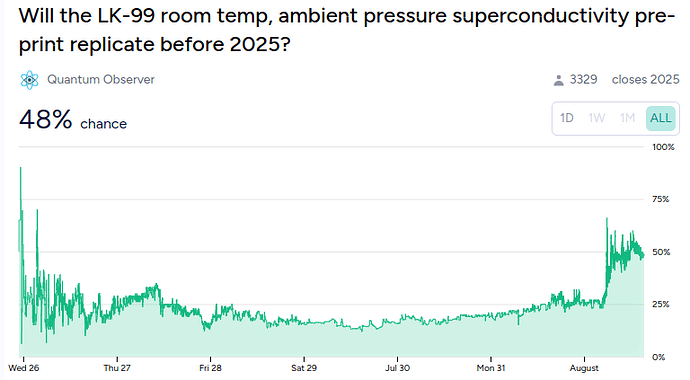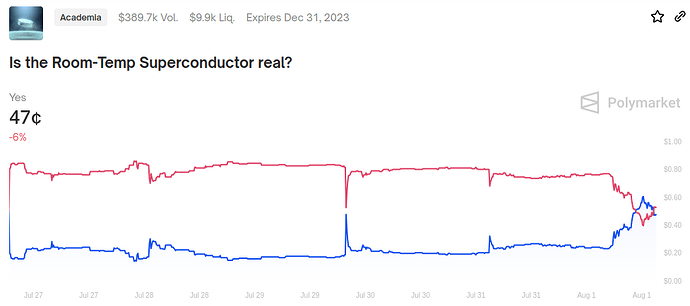In a paper posted on arXiv on 2023-07-23, three researchers from the Quantum Energy Research Centre, Inc. and KU-KIST Graduate School of Converging Science and Technology, Korea University, Seoul, South Korea, report the production and test of a lead-apatite material which they claim exhibits all of the phenomena of superconductivity at room temperatures and above (they state its critical temperature, below which it is a superconductor, as 400 K, or 127° C) and ambient atmospheric pressure at sea level. Here is the paper.
Full text, in PDF form, is available at the link. The abstract is as follows:
For the first time in the world, we succeeded in synthesizing the room-temperature superconductor (T_c\geq 400 {\rm K}, 127∘ C) working at ambient pressure with a modified lead-apatite (LK-99) structure. The superconductivity of LK-99 is proved with the Critical temperature (T_c), Zero-resistivity, Critical current (I_c), Critical magnetic field (H_c), and the Meissner effect. The superconductivity of LK-99 originates from minute structural distortion by a slight volume shrinkage (0.48 %), not by external factors such as temperature and pressure. The shrinkage is caused by {\rm Cu}^{2+} substitution of {\rm Pb2}^{+}(2) ions in the insulating network of Pb(2)-phosphate and it generates the stress. It concurrently transfers to Pb(1) of the cylindrical column resulting in distortion of the cylindrical column interface, which creates superconducting quantum wells (SQWs) in the interface. The heat capacity results indicated that the new model is suitable for explaining the superconductivity of LK-99. The unique structure of LK-99 that allows the minute distorted structure to be maintained in the interfaces is the most important factor that LK-99 maintains and exhibits superconductivity at room temperatures and ambient pressure.
These illustrations from the paper show the structure of the synthesised material.
This paper is the first scientific disclosure of these results. The posting on arXiv lists no submission to or acceptance of the paper by a peer-reviewed journal. However, @CTLaw has found three filings with the Korean patent office regarding this work, all filed in March 2023 with a “Priority date” (whatever that is) of 2021-08-25:
- WO2023027537 “ROOM-TEMPERATURE AND ATMOSPHERIC-PRESSURE SUPERCONDUCTING CERAMIC COMPOUND AND PREPARATION METHOD THEREFOR”
- KR20230030188 “Ceramic composite with superconductivities over room temperature at atmospheric condition and mehtod of manufacturing the ceramic composite” (misspelling of “method” in original)
- KR20230030551 “Ceramic composite with superconductivities over room temperature at atmospheric condition and mehtod of manufacturing the ceramic composite” (misspelling of “method” in original)
The menu at the left of these items allows viewing description, claims, cited, and citing documents, with buttons to machine translate from Korean where required. No other patent filings have been found so far.
This silent video from the Quantum Energy Research Centre, institution of two of the co-authors, purports to show repulsion of a copper disc with a thermally deposited coating of the LK-99 material from a permanent magnet, as would be expected to occur from a superconductor manifesting the Meissner effect.
Another video, which cannot be embedded here, claims to show levitation of a sample of LK-99 above a permanent magnet: “Superconductor {\rm Pb}_{10−x}{\rm Cu}_x({\rm PO}_4)_{6 O} showing levitation at room temperature and atmospheric pressure and mechanism”. Note that the corner of the material never actually rises above the magnet.
In both of these magnetic repulsion videos, keep in mind that magnetic repulsion and/or levitation are not, by themselves, probative of superconductivity: a diamagnetic material such as pyrolytic graphite, can be made to levitate in a magnetic field without being superconductive.
Here are some additional causes for caution by “some guy on the Internet”.
This is, of course, far from the first time we’ve discussed high-temperature or room-temperature superconductivity here. See these earlier posts:
- arXiv Preprint Server Cancels Papers, Bans Researcher over “Inflammatory Content” 2022-03-16
- Room Temperature Superconductivity? “This Time for Sure!” 2023-03-09
- The Superconductivity Squabble, Physics, History, and Controversy 2023-04-03
- Jorge Hirsch on Room Temperature Superconductivity or Scientific Fraud? 2023-05-19
Unlike earlier claims, which were based upon material under extreme pressure in a diamond anvil cell, this paper claims superconductivity under ordinary laboratory conditions, and rather than exotic materials such as lutetium hydride compounds, uses a phosphate of lead doped with copper, which a competent chemist should be able to whip up and test for themselves, which I presume is going on as I write in laboratories around the world.
There’s no need among this audience to explain the technological consequences of discovery of room temperature, ambient pressure superconductivity. If the effect is genuine, and materials can be engineered which retain their superconductivity under the high magnetic fields of power transmissions (which has been a limitation of the cuprate superconductors that operate at liquid nitrogen temperatures), this may spark a revolution in electronics as significant as the invention of the transistor, vacuum tube, and induction motor.
We’ll see.
(The Korea Institute of Science and Technology, home of one of the co-inventors was, in the 1970s, a Marinchip Systems customer.)
